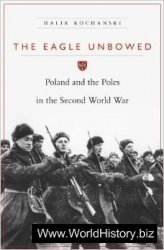Analysis of the conciliar acts offers the opportunity to explore the practices and strategies of contestation, persuasion, rhetoric, and resistance employed by both the council’s architects and its critics. What gave a council its legitimacy, and what were the limits on what it could do? When bishops signed up to controversial statements of doctrine, on whose behalf did they speak, and by what right? Council participants not only claimed to hold authority over the whole Church, but also presumed to speak in the name of dead ‘‘fathers’’ and previous councils in asserting the right to interpret or ‘‘clarify’’ what their predecessors had meant. The bishops, as a group, appealed to hierarchical principle and apostolic authority - even though individual bishops could easily forfeit that position when they abused their office and fell into heresy. The engineered unanimity of conciliar pronouncements was believed, ideally, to reflect inspiration by the Holy Spirit.
The ample surviving documentation for the Councils of Ephesus and particularly Chalcedon allows us to look beneath the canons and definitions that constituted their final products and take a close look at the decision-making process in and around the councils themselves (for Chalcedon, see now Price and Gaddis 2005). The documentary acts preserve much information about the organization, procedure, and presidency of the conciliar assemblies. They illustrate the expression and suppression of opinion and debate, the operation of authority and processes of decision, across the different categories of issues with which the councils dealt - doctrinal definition, canonical legislation, and judicial adjudication. Though all met at the emperor’s invitation, comparison of the Ephesian councils and Chalcedon illustrates very different models of procedure and presidency, the former dominated by the episcopal ‘‘tyranny’’ of Dioscorus of Alexandria and his allies, the latter held under tight imperial supervision. Where both Ephesian councils undertook the identification, denunciation, and exclusion of‘‘Nestorian’’ heretics, Chalcedon emphasized instead the appearance of order and lawful procedure, and offered a centrist doctrinal formula, to which all were considered to have consented, whether they liked it or not (Gaddis 2005: ch. 8; Price and Gaddis 2005, i: 19-51). Nevertheless, these councils had much in common with one another and with most ecclesiastical synods. Their judgments, especially in matters of doctrine, were to be reached not by debate and majority vote but rather by a unanimous consensus that, when attained, would be taken as evidence of divine inspiration. Since arguments and differences of opinion were not to be aired in the public record, major decisions were typically reached behind the scenes by small groups of leading churchmen, before being presented to the assembled bishops for their acclamation (Chalcedon’s Definition written by a select committee: session 2. 6; 5. 29, Price and Gaddis 2005, ii: 11, 200). The achievement of unanimity among hundreds of churchmen often required a considerable degree of pressure, applied with the support of the secular authorities or by the numerous and rowdy followers of the most powerful bishops. Ephesus II had been marred by explicit coercion, earning its reputation as a latrocinium, a lawless assembly disgraced by violence (Leo first coined the term: Ep. 95). Two years later, at Chalcedon, coercive pressure was considerably more measured and subtle - but nevertheless effective. Marcian first compelled the bishops to produce a new Definition of Faith, even though they saw no need for it (session 2. 2-7; 5. 2-8, Price and Gaddis 2005, ii: 9-11, 196-7) and then, when they produced a draft that did not satisfy the papal legates, ordered them to rewrite it (5. 9-29, Price and Gaddis 2005, ii: 197-201, with discussion at ii: 183-91).




 World History
World History









